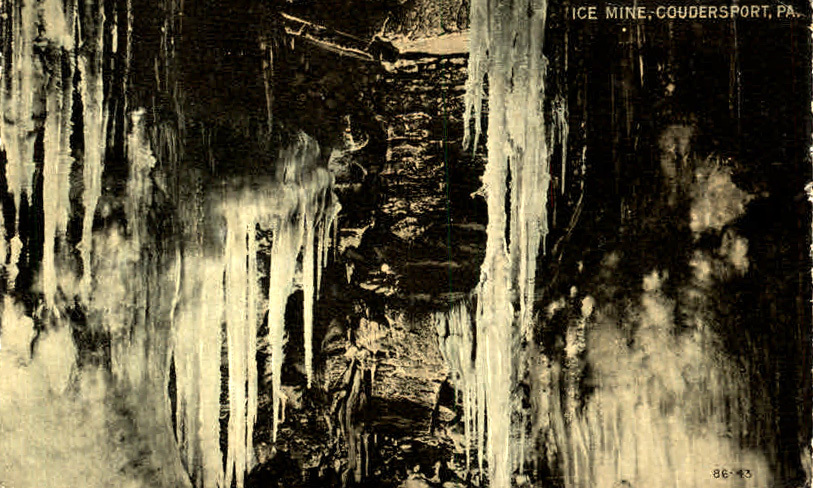Sweden Valley Ice Mine, one of the unexplained mysteries of nature, is located about four miles east of Coudersport, the county seat of Potter County, Pa. A similar phenomenon is situated on Dingman Run, about three miles west of Coudersport. These are natural ice-manufacturing plants, running under full head during the warm season of the year, but shutting down entirely during the cold months of winter, when there is plenty of ice and snow to be had elsewhere and when it would seem to be the most natural time for the formation of ice at these places.

The Coudersport Ice Mine in Potter County is a little different from the usual campsites and hiking trails. It’s a cave where ice forms — but only in the summer.
It’s actually one of many so-called “cold spots” in the mountains from southern New York to West Virginia. The Coudersport mine was found by a silver prospector in 1894 and used to store meat. Then it was turned into a tourist attraction in the early 1900s, but closed down in 1989.
But after a 25-year hiatus, the mine reopened for tourists last month. Diana and Gary Buchsen, who own a nearby inn, bought the old ice mine about a year ago. Diana says the cave will never be Niagara Falls or an amusement park. She wants visitors to experience something else here.
So how does the summer ice work? “During the winter, the air is pushed into the mountain, because the rocks are layered like this through the whole mountain,” McManus explains, “and then in the summer, the air comes out, mixes with the humidity and the heat, forming the ice.” At least, that’s the best guess.
No matter how it forms, there are 18 inches of ice on the bottom of the mine and people are crowding in to see it.
Inside the ice mine itself — it’s a small dungeon-like room that’s open at the top — small groups of people can gather around a wooden platform and lean over the metal railing that surrounds an opening into the earth. It’s really just an eight-foot by ten-foot pit, a cave a few dozen feet deep. Below the platform, there are icicles like elephant tusks clinging to the sides of the mine.
All around the opening are layers of rocks, covered in moss and dripping with water. But looking up through the opening, you can see clouds and old hemlock trees swaying in the breeze.
Ironically, hotter weather means more ice, not less. “A few weeks ago there was ice around the whole entire thing, touching the bottom,” McManus says. “But because it’s been colder weather, and we had all this rain, it’s broken down inside.”


